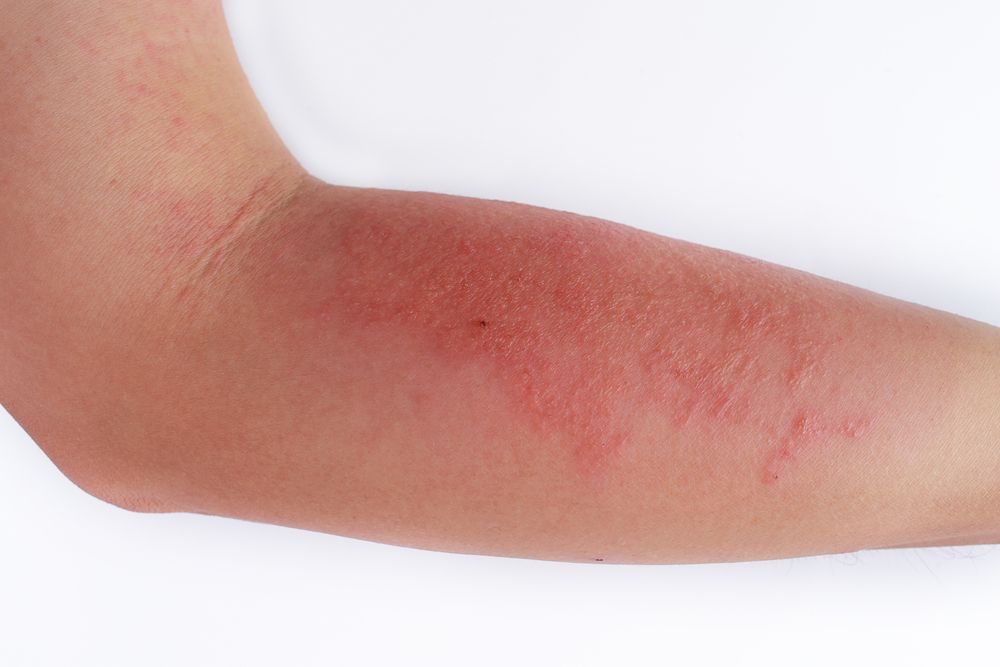- Case-Based Roundtable
- General Dermatology
- Eczema
- Chronic Hand Eczema
- Alopecia
- Aesthetics
- Vitiligo
- COVID-19
- Actinic Keratosis
- Precision Medicine and Biologics
- Rare Disease
- Wound Care
- Rosacea
- Psoriasis
- Psoriatic Arthritis
- Atopic Dermatitis
- Melasma
- NP and PA
- Skin Cancer
- Hidradenitis Suppurativa
- Drug Watch
- Pigmentary Disorders
- Acne
- Pediatric Dermatology
- Practice Management
- Prurigo Nodularis
- Buy-and-Bill
Article
Topical therapy uses in psoriasis and atopic dermatitis
Author(s):
Reporting from Fall Clinical in Las Vegas, Dr. James Del Rosso reviews best practices for topical therapy uses in psoriasis and atopic dermatitis.
Reporting from Fall Clinical in Las Vegas, Dr. James Del Rosso reviews best practices for topical therapy uses in psoriasis and atopic dermatitis. (©TYLim/Shutterstock.com)

There are a host of effective and safe nonsteriodal topical therapies for skin disorders such as atopic dermatitis and psoriasis, according to a presentation at the 2018 Fall Clinical Dermatology Conference.
“Many of the diseases that we treat, such as atopic dermatitis and psoriasis, are chronic diseases. Initially, we want to quickly decrease the flare of the disease, in which case we often use a topical corticosteroid (TCS),” said James Del Rosso, D.O., of JDR Dermatology Research in Las Vegas, Nevada. “However, by doing so, we are not curing the disease. Therefore, we maintain control of the disease by trying to reduce topical corticosteroid exposure and incorporating nonsteroidal topical treatments.”
Applying good moisturizers or barrier repair agents has been shown to be efficacious not only for atopic dermatitis, but for psoriasis, acne and rosacea as well. “Moisturizers can prolong the time to flare, reduce the frequency of flares and reduce overall topical corticosteroid use in atopic dermatitis,” Dr. Del Rosso said.
A second class of topical agents integral to managing common skin disorders is topical calcineurin inhibitors (TCIs). “These agents can be used in combination or as sequential treatment with topical corticosteroids for atopic dermatitis,” said Del Rosso, citing the example of pimecrolimus 1 percent cream.
“You can also use an approach called pre-emptive therapy,” he said. “For instance, once a patient’s atopic dermatitis has cleared up with treatment, you instruct the patient to then use the topical corticosteroids or calcineurin inhibitors two to three times a week on the areas that tend to flare in order to keep the flares from recurring.”
In addition, pinecrolimus 1percent cream has demonstrated efficacy in treating inverse psoriasis involving folds of the axilla and the groin, where topical corticosteroids are best avoided, especially long term, because of their side effects.
Crisaborole 2 percent ointment is a topical phosphodiesterase-4 (PDE4) inhibitor that is FDA approved for atopic dermatitis, but it has also been shown benefit for inverse psoriasis and seborrheic dermatitis.
Likewise, calcipotriene 0.005 percent foam is a topical vitamin D analogue used to treat plaque psoriasis of the body and/or scalp. The aqueous-based calcipotriene 0.005 percent foam emulsion is free of short-chain alcohols (ethanol), fragrances and preservatives, spreads easily and lacks residual residue, resulting in a high level of patient satisfaction.
Moreover, available data suggests that skin tolerability favors calcipotriene foam compared to other vehicle formulations in similar patient populations: 2 percent versus between 10 percent and 23 percent, respectively.
All of the above-mentioned products have excellent safety profiles, according to Dr. Del Rosso.
Tapinarof cream and lotamilast ointment are two topical agents in clinical trials from Dermavant that Dr. Del Rosso is excited about.
“Tapinarof is a new mechanism of action – the aryl hydrocarbon receptor (AhR) agonist – that reduces inflammation and improves epidermal barrier function, both important modes of action in treating atopic dermatitis,” he said. In contrast, lotamilast is a selective PDE4 inhibitor that has shown promise for atopic dermatitis in both children and adults.
Dr. Del Rosso said that to date, the efficacy and safety profiles of these two new agents appear very promising, but will eventually be dependent on determining optimal dosing and outcomes in larger trials.
DISCLOSURES
Dr. Del Rosso is a consultant, researcher and/or speaker to all the products mentioned in this article.





